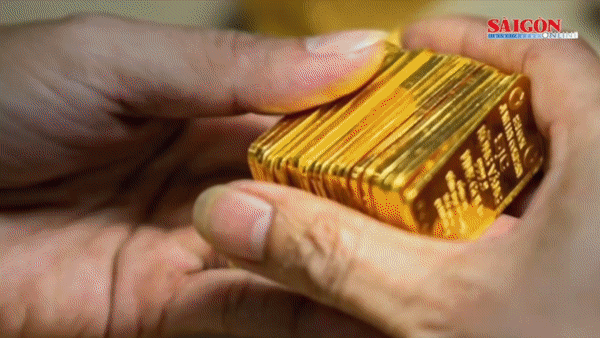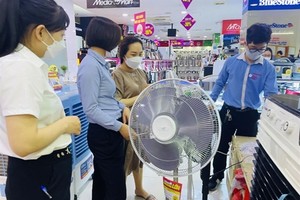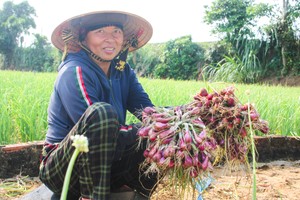 The Biotechnology Center of HCMC has created new vegetable varieties to develop the city's agriculture industry. (Photo: SGGP)
The Biotechnology Center of HCMC has created new vegetable varieties to develop the city's agriculture industry. (Photo: SGGP)
After earning a decent income by selling yellow apricot in the lunar New Year, farmers of the Binh Loi yellow apricot village in Binh Chanh District are busy receiving groups of clients from provinces and cities who come to buy yellow apricot seedlings.
Director of Binh Loi Yellow Apricot Cooperative Le Huu Thien said that his garden has sold more than 5,000 young tree priced from several hundred thousands to million Vietnam dong a tree from the beginning of February to present while the cooperative has sold over 20,000 yellow apricot seedlings.
Binh Loi yellow apricot is people’s favorite flower because it has higher value than apricot varieties in other localities thanks to its quality, strong and healthy growth suited to long-distance transport. It does not take much time to take care of young plants and provide an income that is not inferior to selling ornamental trees, he added.
Thanks to 300 breeding hogs provided by the HCMC Department of Agriculture and Rural Development, the Tien Phong Clean Pig Farming Cooperative had a good business performance during the African swine fever outbreaks.
The Biotechnology Center of HCMC has collected more than 390 types of orchids, 166 plants with ornamental foliage, 124 short-day plants, 100 types of medicinal herbs and 11 fish species, especially 20 types of Dendrobium orchids over the past ten years. The center has also offered 500,000 seeds of the cantaloupe per year and achieved success in studying 10 processes of vegetative propagation and farming techniques.
According to Director of the HCMC Department of Agriculture and Rural Development Dinh Manh Hiep, the urbanization is an inevitable process of the southern economic hub. The city’s agricultural sector will focus on areas associated with science and high technology. HCMC has recently become one of the centers providing plant seeds to provinces and cities in the country in general and the Southern region particularly.
The city’s Department of Agriculture and Rural Development will establish seed production areas; develop cooperatives and seed propagation and production networks; form seed production associations; invest, improve and modernize seed production units; connect research and studies centers with businesses; improve seed storage and preservation and so on. The city’s agricultural sector will mobilize enterprises, cooperatives, and people to invest in the above-mentioned areas, he said.
HCMC plans to create brand names for Can Gio District’s specialty products of Dua fish (Pangasius elongatus) and mango to develop more OCOP products under the country’s “one commune – one product” (OCOP) program. Can Gio currently has more than 25 hectares of mango and 32 hectares of Dua fish. The total production of mango and Dua fish are 9-10 tons per hectare and 55 tons per year respectively.
Under the municipal Department of Agriculture and Rural Development’s draft scheme for the 2020-2030 period, the city will strive to hand over 5-6 new high-quality vegetable varieties; provide 850-950 tons of seeds to the market, meeting the demand for 1.2-1.5 million ha each year; develop 50-60 percent of demand for orchid farming with 30-40 million seedlings each year; upgrade and put into operation three-four high-tech agricultural zones.
























